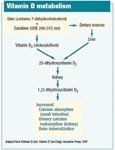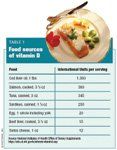Vitamin D: Benefits for bone, and beyond
We are not yet sure how much vitamin D a growing child needs, but we do know that most need more than they get. New recommendations are forthcoming but, until they are formulated, pediatricians should encourage maximal vitamin D intake from food, supplements, and outdoor activities whenever possible.
DR. TAYLOR is assistant professor, and DR. WAGNER and DR. HOLLIS are professors, in the department of pediatrics, Medical University of South Carolina Children's Hospital, Charleston, S.C. Dr. Hollis consults for DiaSorin Corporation; Drs Taylor and Wagner have nothing to disclose in regard to affiliations with, or financial interests in, any organization that may have an interest in any part of this article.

Sunlight and cod liver oil
Vitamin D metabolism

Both vitamin D2 and vitamin D3 are precursors to 25-hydroxyvitamin D [25(OH)D], which is formed in the liver (see the Figure). 25(OH)D, in turn, is converted to 1,25-dihydroxyvitamin D [1,25(OH)2 D] in the kidney and other sites in the body. The 1,25(OH)2 D formed in the kidney has hormonal action in bone, intestine, and kidney. The 1,25(OH)2 D formed at other sites in the body has local actions specific for the organ or cell in which it is made.15 Uncovering this local activity of 1,25(OH)2 D and its role in immune function is a recent advance that has greatly expanded our understanding of the importance of vitamin D in disease prevention.8-11 Vitamin D metabolism is illustrated in the figure.